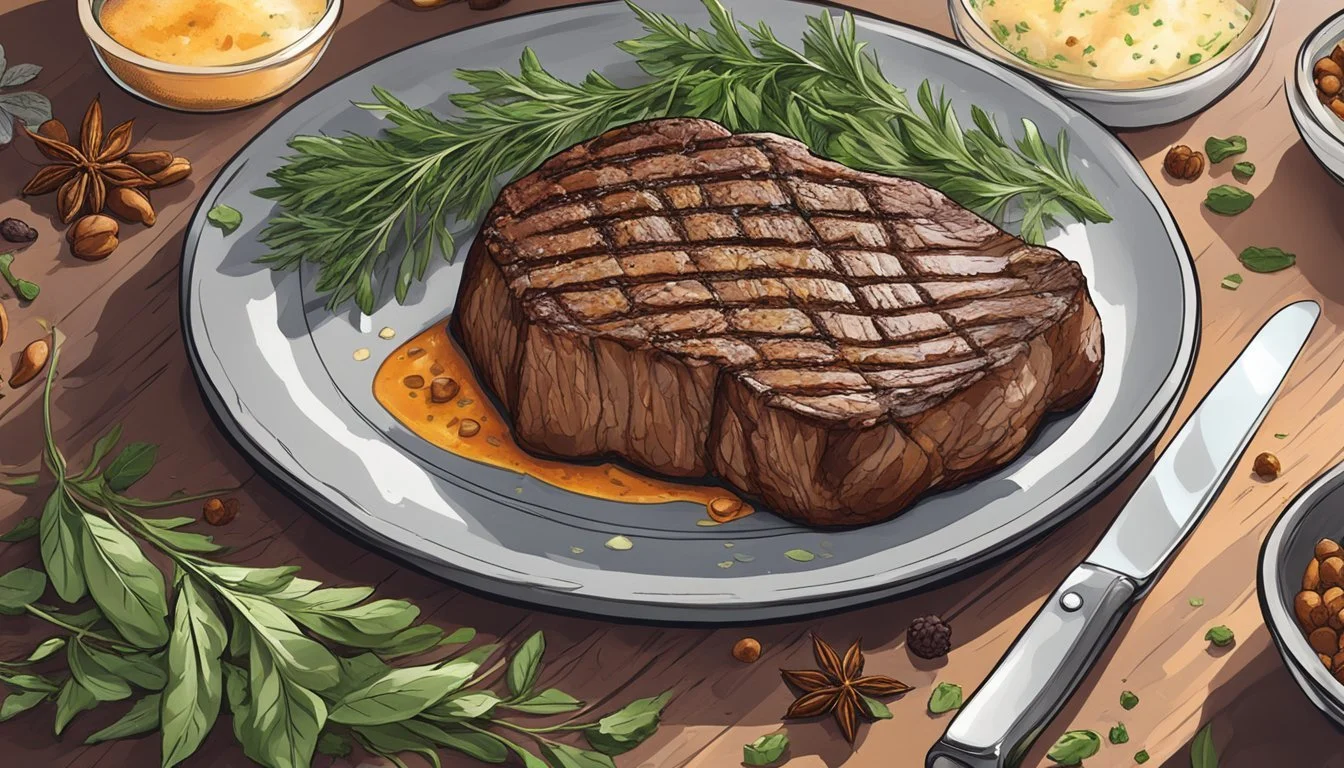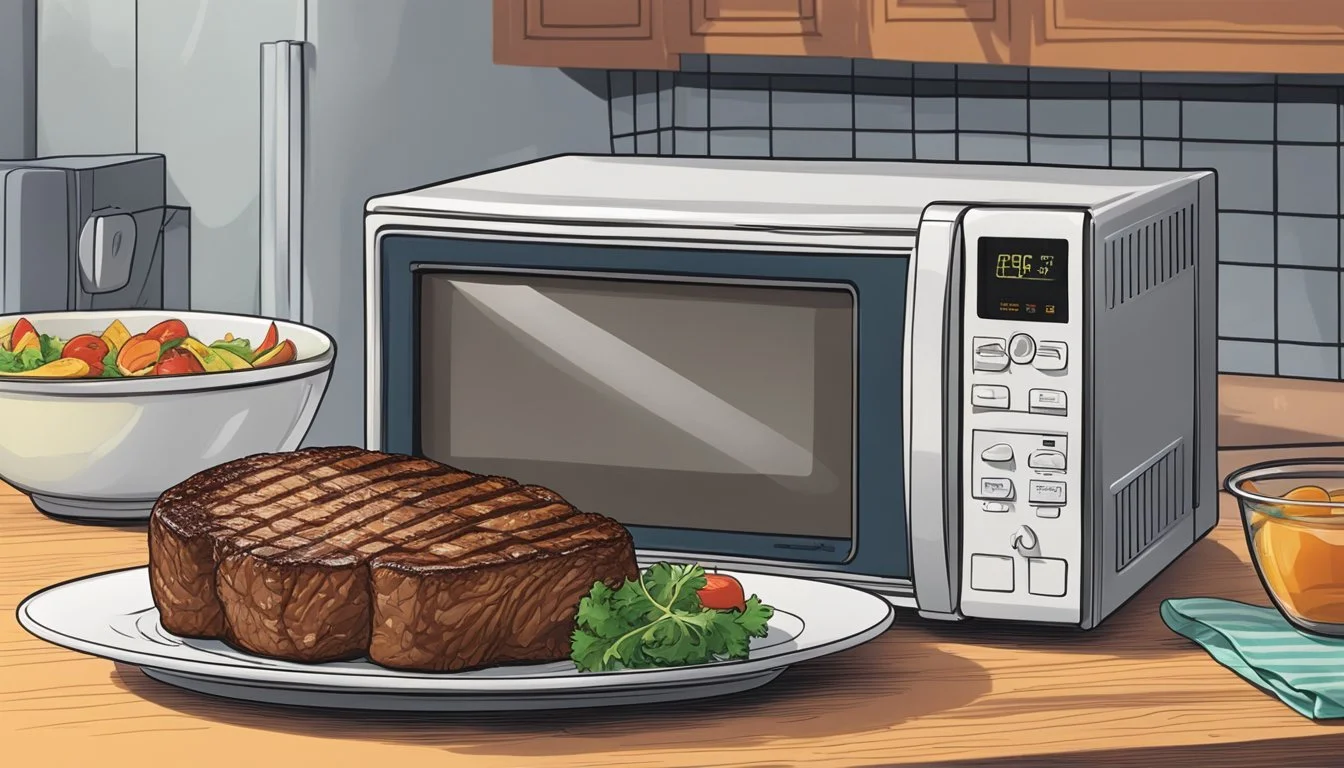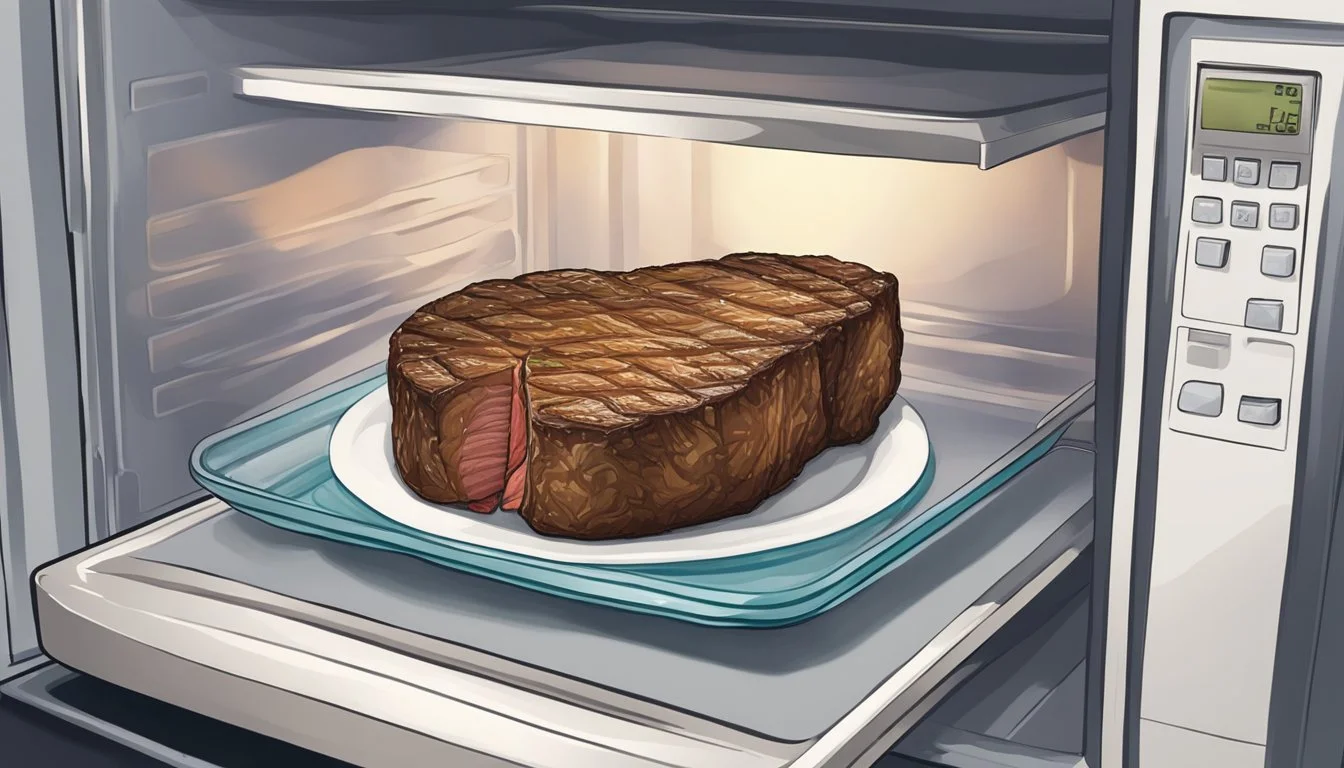Best Way to Reheat Tenderloin Steak
Tips for Preserving Its Buttery Texture
Tenderloin steak is a premium cut known for its buttery texture and succulent flavor. Preserving these qualities during reheating is crucial to enjoying the steak as though it's freshly cooked. Traditional methods may lead to overcooking or drying out such a delicate piece of meat. Thus, a carefully chosen reheating process can ensure the steak's original tenderness and juiciness are maintained.
Reheating steak to perfection involves balancing temperature and time to recreate that just-off-the-grill taste. The key is gentle heating which allows the meat's internal temperature to rise without losing moisture. methods such as oven reheating at a low temperature or using a water bath achieve this balance, gently warming the steak to the desired level. Therefore, choosing the right reheating technique can make the difference between a dry, tough piece of meat and a tender, flavorful steak that retains its original quality.
Understanding the Fundamentals of Steak Reheating
When reheating tenderloin steak, the objective is to retain its buttery texture and moisture without overcooking. Precise temperature control and consideration of steak thickness and initial doneness are critical.
Importance of Temperature Control
To maintain the delicate texture of a tenderloin steak, reheating must be approached with meticulous temperature control. Reheating at a low and slow temperature is essential to prevent the fibers of the muscle from tightening and losing moisture, which results in a dry, tough steak. The oven method is commonly recommended, setting the oven to about 250 degrees Fahrenheit. This gentle heat helps warm the steak evenly and slowly, maintaining its tenderness and juicy flavor.
It's important to let the steak reach room temperature before reheating. This step reduces the overall temperature difference, leading to less risk of overheating and overcooked edges. For a tenderloin that was initially cooked to medium-rare or rare, keeping the internal temperature around 110 degrees Fahrenheit during reheating is key to preserving its doneness and juicy qualities.
The Role of Steak Thickness and Doneness
The initial doneness and thickness of the steak heavily influence the reheating process. A thicker steak will require more time to reheat, while a steak that was initially cooked to medium or beyond should be monitored closely to avoid further overcooking.
Thickness Reheating Time (Approx.) Thin 20 minutes Medium 30 minutes Thick Up to 40 minutes
When reheating, the internal temperature will be the final judge of when the steak is appropriately warmed through. Using a meat thermometer can assure that the internal temperature is just right, especially for a tenderloin that falls into medium-rare territory. In contrast, the microwave might seem convenient but can unevenly distribute heat and push the steak past its perfect level of doneness, compromising its flavor and tenderness. For the best results, patience and precise heating are pivotal in the reheating process of reheating beef tenderloin (What wine goes well with beef tenderloin?), making it a dish worth savoring a second time around.
Pre-Reheating Preparation
Proper pre-reheating preparation is crucial to ensure that leftover beef tenderloin retains its buttery texture and doneness when reheated. This section will guide you through the necessary steps to prep your steak optimally before warming.
Bringing Steak to Room Temperature
To prevent the tenderloin from drying out and to achieve even reheating, it's essential that the steak is brought to room temperature before applying heat. Remove the beef tenderloin from the refrigerator and allow it to rest, covered, for at least 30 minutes. This resting period ensures that the reheating process does not overcook the edges before the center of the steak has warmed sufficiently.
Pre-Heating the Reheating Equipment
Oven
If using an oven, preheat it to a low temperature of 250°F (120°C). A low and slow technique is recommended for reheating beef tenderloin to maintain its juiciness and prevent the meat from drying out.
Equipment Temperature Remarks Oven 250°F (120°C) Preserves juiciness Microwave Medium Power Use for quick reheating
Microwave
For a quicker option, set the microwave to medium power. This method is suitable if time is of the essence. Place the leftover beef tenderloin in a microwave-safe dish and lightly cover it with a microwave-safe lid or plastic wrap to retain moisture.
To infuse additional flavor during reheating, consider adding a splash of steak juice, a dollop of garlic butter, or other desired seasonings or ingredients before heating. This will enrich the tenderloin as it warms, augmenting its natural flavors.
Reheating Methods for Optimal Texture
To preserve the tenderness and moisture of tenderloin steak while reheating it, one must use methods that apply gentle and even heat. This section explores several techniques that ensure the meat reheats without losing its succulent, buttery texture.
Oven-Based Reheating Technique
For reheating in the oven, it's important to let the tenderloin sit at room temperature for about 30 minutes before cooking, to ensure an even heat distribution. Preheat the oven to a low temperature of 250°F (120°C) to gently warm the beef without overcooking. Place the steak on a baking sheet, and optionally tent with aluminum foil to lock in moisture. A meat thermometer can help monitor the internal temperature.
Stovetop Reheating Technique
The stovetop method incorporates using a skillet, preferably cast-iron, to achieve a quick sear that keeps the steak juicy inside. Heat the skillet over a medium-low setting to provide consistent heat without burning the tenderloin. Add a small amount of broth or steak juices to the pan to contribute additional moisture while reheating.
Using Sous Vide for Precision Reheating
For unparalleled precision, sous vide reheating utilizes a water bath to bring the steak to the desired temperature without surpassing it. Heating the steak in a vacuum-sealed bag at a regulated temperature, typically around 140°F (60°C) for medium, ensures that the tenderloin remains juicy and tender. It is essential to have a sous vide machine and an accurate thermometer to monitor water temperature.
Alternative Reheating Methods
Alternative methods include the use of an air fryer or steaming to reheat tenderloin. The air fryer should be set to a low temperature to mimic the gentle cooking of an oven, while steaming involves heating the steak in a steamer basket over simmering water. Both methods should aim for minimal cooking time to avoid drying out the meat.
Final Touches and Resting
Proper finishing techniques are crucial for ensuring that a reheated tenderloin steak retains its succulent texture. Attention to internal temperature and resting time allows the meat's juices to redistribute evenly.
Checking Internal Temperature
One should use a meat thermometer to accurately measure the internal temperature of the tenderloin. The ideal temperature for reheated beef is around 130°F to 135°F for medium-rare. Monitoring ensures the meat remains tender and avoids overcooking.
Insert the thermometer into the thickest part of the steak.
Aim for the following temperatures for desired doneness:
Rare: 120°F - 125°F
Medium-Rare: 130°F - 135°F
Medium: 140°F - 145°F
Medium-Well: 150°F - 155°F
Well-Done: 160°F and above
Resting and Redistributing Juices
After heating, resting the tenderloin allows the juices to redistribute throughout the meat, ensuring that each bite is as flavorful and succulent as the last. A rest period of 5 to 10 minutes is generally sufficient for the juices to settle.
Cover the meat loosely with foil during the resting period to retain heat.
Do not cut the steak immediately after heating to prevent juice loss.
Adhering to these steps will help maintain the tenderloin's cherished buttery texture, making for an enjoyable dining experience.
Avoiding Common Reheating Mistakes
When reheating tenderloin steak, it's crucial to apply techniques that preserve its succulent texture. Failure to do so can lead to a meal that's tough, dry, or lacking in flavor. This section provides strategies to avoid common pitfalls.
Preventing Dryness and Toughness
Tenderloin steak is prized for its tender, buttery texture. To prevent drying out and toughening:
Low Heat: Utilize low heat to gently warm the steak, preserving its natural juiciness.
Timing: Motor the internal temperature; carnivorous delights such as filet mignon should never pass the peak temperature of their desired doneness.
Managing Heat Appropriately
Appropriate heat management is key to maintaining the steak's integrity:
Oven Method: Reheat in a preheated 250°F (120°C) oven on a wire rack over a baking tray, allowing air to circulate evenly.
Searing: If searing, do so briefly over high heat to avoid overcooking the interior.
Retaining Moisture and Flavor
The steak's flavor and moisture are essential, and multiple techniques can aid in retaining these qualities:
Resting: Allow the steak to reach room temperature before reheating to ensure even heat distribution.
Moisture: If using a microwave, cover the steak with a microwave-safe lid to trap steam and keep the meat moist.
Flavor: Utilize steak juices or a light rub to boost flavor and tenderness, avoiding a rubbery texture.
By adhering to these methods, they can serve up a reheated tenderloin that's almost as good as when it first came off the grill.
Serving and Pairing Reheated Tenderloin Steak
When serving reheated tenderloin steak, balancing flavors, textures, and presentation is paramount to elevate the eating experience. The right side dishes and sauces can enhance the succulent, butter-like texture of the meat, while thoughtful presentation showcases the quality of the dish.
Appropriate Side Dishes and Sauces
The tenderloin steak's natural juiciness pairs well with sides that complement its rich flavor without overpowering it. Here are some suggestions:
Vegetables: Roasted asparagus or sautéed green beans drizzled with a hint of vegetable oil and a sprinkle of salt enhance the steak's natural taste.
Starches: A serving of creamy mashed potatoes or a buttery potato gratin can harmonize with the tenderness of the steak.
Sauces: To add a layer of flavor, opt for a red wine reduction or a béarnaise sauce. These sauces provide a liquid component that helps in retaining the steak's moisture.
For wine pairing, a bottle of full-bodied red wine like Cabernet Sauvignon or a smooth Bordeaux complements the steak's rich texture and flavor.
Best Practices for Presentation
The presentation of the reheated tenderloin steak should evoke a sense of care and attention to detail:
Cutting: Before serving, the steak may be thinly sliced against the grain to showcase the even pinkness and to make the buttery texture more visible.
Plating: Use a warm plate to maintain the steak's optimal temperature. Carefully arrange the slices and sides with enough space between them to avoid a crowded look.
Garnishing: A light sprinkle of freshly ground black pepper or flaky sea salt can highlight the steak's flavor. Finish with a drizzle of melted butter for added sheen and succulence.
Remember, the goal is to serve a steak that is visually appealing and cooked to such perfection that its texture and flavor resemble as closely as possible to when it was first prepared.
Proper Storage for Leftover Steak
The longevity and quality of a reheated beef tenderloin rely heavily on proper storage techniques. A meticulously wrapped and promptly refrigerated steak ensures maximum flavor retention when it's time to reheat it.
Cooling and Wrapping Techniques
After enjoying a meal, one should allow their leftover beef tenderloin to cool to room temperature before storage, which typically takes about 30 minutes. Speedy refrigeration of hot steak can lead to condensation and unwanted moisture buildup. Wrapping the steak securely is crucial to prevent air exposure that can dry out the meat and introduce odors from other foods. One should:
Wrap the steak tightly with aluminum foil or plastic wrap, making sure there are no gaps.
For extra protection, place the wrapped steak in an airtight container or resealable plastic bag.
Refrigeration Guidelines
To maintain the tenderloin's buttery texture, adherence to proper refrigeration guidelines is essential.
The steak should be placed in the coldest part of the refrigerator.
Store leftovers within two hours of cooking to reduce the risk of bacterial growth.
The ideal refrigerator setting for storing steak is at or below 40 degrees Fahrenheit (4 degrees Celsius).
Following these simple yet vital storage practices can help ensure that one's leftover tenderloin steak remains as savory and succulent as when it was first served, ready to be reheated to perfection.
Frequently Asked Questions
In this section, the reader will find specific reheating times and temperatures necessary to maintain the quality of various cuts of steak, ensuring a juicy and flavorful experience.
Reheating Times and Temperatures
When reheating beef tenderloin or any steak, it is imperative to monitor the temperature closely to avoid overcooking. For medium-rare, the target internal temperature is 135°F; for medium, aim for 145°F; and for well done, heat until it reaches 160°F. Using a meat thermometer will ensure accuracy. Here is a guide for reheating beef tenderloin in various devices:
Oven: Preheat to 250°F. Reheat steak for 20-30 minutes.
Microwave: Set to low power and reheat in 60-second intervals.
Skillet: Over low heat for a few minutes on each side.
Sous Vide: Set the water bath to the desired final temperature and reheat for 45 minutes.
Managing Different Cuts of Steak
Different cuts of steak require unique approaches due to their varying textures and thicknesses.
Beef Tenderloin: Known for its tenderness, reheat gently in an oven preheated to 250°F or using the sous vide method.
Strip Steak: This cut can be reheated in a skillet over medium heat to maintain its flavor.
Filet Mignon: Being thick and tender, the filet is best reheated in the oven on a low temperature or via sous vide.
Chefs recommend allowing the steak to reach room temperature before reheating, regardless of the method, for even warming. Always rest the steak for a few minutes after reheating before serving to allow the juices to redistribute.






